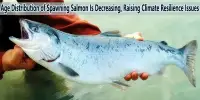Researchers collaborated to better understand the importance of flexibility and inhibition in problem-solving and how they interact in the great-tailed grackle, a behaviorally adaptable urban bird.
The researchers used a variety of tests to examine people’s cognitive capacities and discovered that self-control, a type of inhibition, was linked to flexibility, or the ability to adjust preferences as circumstances change.
Behavioral flexibility is linked with self-control
Researchers discovered that grackles that were faster to reverse a color preference, a common measure of flexibility, were also faster to inhibit their behavior in a ‘go no-go’ test on a touchscreen computer, where they touch one shape for a reward but not the other. This shows that learning to modify a preference involves inhibition.
“The grackles are likely inhibiting themselves from choosing the previously rewarded option so they can instead choose the other option, which is now the only option that has food in it,” says Corina Logan, a senior researcher at the Max Planck Institute for Evolutionary Anthropology, and lead author.
The relationship was the opposite when using a newer measure of flexibility, the time it takes for grackles to switch to trying to solve a new option on a puzzlebox after previously succeeding on a different option: grackles who were faster to switch to a new option were slower to inhibit their behavior in the ‘go no-go’ test.
Different birds may use different inhibitory strategies, according to the authors: those who are less likely to inhibit might instead explore all options, which increases the likelihood of a correct puzzlebox solve, but this would not be a strategy they could use in situations where they must stick with one option.
It was clear that a few birds were content to be rewarded inconsistently and so they pecked at everything that came up on the screen. On the other hand, other birds clearly learned the task and would sit and stare at the screen until the correct shape showed up.
Kelsey McCune
Kelsey McCune, a postdoctoral researcher at the University of California Santa Barbara, noted differences in the strategies used by the grackles in the ‘go no-go’ test on the computer:
“It was clear that a few birds were content to be rewarded inconsistently and so they pecked at everything that came up on the screen. On the other hand, other birds clearly learned the task and would sit and stare at the screen until the correct shape showed up.”
Careful what you call it: flexibility is not linked with motor control
The ‘detour’ test, in which one must go around to the side of a clear plastic tube to get the food from the tube’s opening rather than straight up to it and trying to get the food through the plastic, is supposed to measure self-control. Grackles who performed better on the ‘detour’ exam did not necessarily do better on the ‘go no-go’ self-control test.
“Our results show that different tests, which are widely referred to as tests of self-control actually assess different cognitive abilities,” says co-author Claudia Wascher, an Associate Professor at Anglia Ruskin University.
The authors conclude that ‘detour’ is a measure of motor inhibition, or the ability to halt a movement that isn’t useful, rather than self-control, or the ability to withhold a response to what they perceive and wait for something that comes later.
Wild-caught birds use computers to participate in tests
The researchers taught grackles to use computers in two of the experiments. It turns out that teaching this species to use a computer is significantly different from teaching pigeons and rats, which two of the authors, Benjamin Seitz, a doctorate student, and Aaron Blaisdell, a professor at the University of California Los Angeles, had previously worked with.
When pecking the screen, grackles appear to be more kind, as well as less persistent if something goes wrong.
“That we were able to get birds caught in the wild to interact with these very artificial touchscreens is still amazing to me, but the birds were more apprehensive with using the touchscreen than other species we’ve tested,” says lead author Seitz.
The team documented their efforts and tribulations and published a tutorial on how to train wild-caught birds to use touchscreens as a result of this unanticipated stumbling block.
Do they use causal cognition?
Blaisdell created a touchscreen computer test to see if grackles employ causal cognition in another experiment. It’s likely that a successful species like the great-tailed grackle achieves its success by employing causal cognition to solve foraging challenges. The capacity to deduce cause and effect could help people learn how to solve problems faster and find better solutions.
This could come in handy when they’re opening packages containing food, as well as a variety of other issues that arise in a city setting. The results were inconclusive, possibly due to the birds’ inability to comprehend the query.
“The greatest challenge when studying a new species is to adapt a procedure that has worked on one species, such as a rat, to successfully get ‘inside the head’ of the new species, such as a grackle,” notes Blaisdell.
To figure out what layout would make sense to the grackles, the experimental design would have to be tweaked.
Where to from here?
Knowing how a flexible species respond to a changing environment can assist improve conservation management plans and make it easier to learn how to encourage flexibility in species that are struggling in this fast-changing world. In their long-term research on the grackle project, the authors continue to combine technology with wild bird behavior to investigate these topics.
















